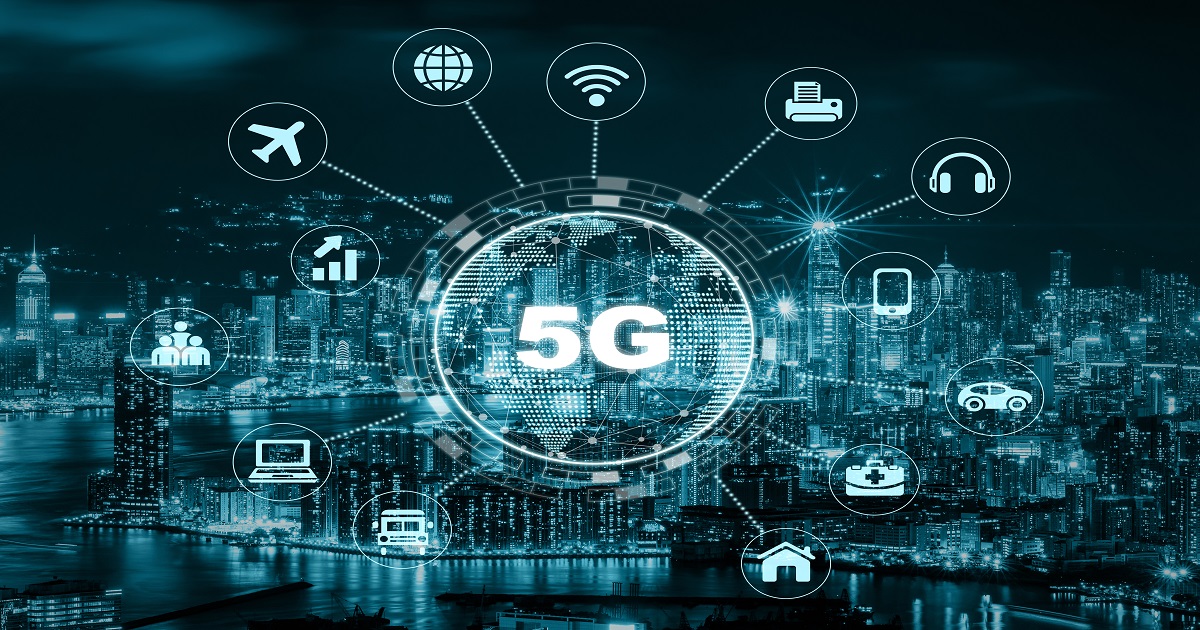
5G is here. It is rolling out, and its promised benefits, including reducing latency, improving throughput and capacity, are clear. As its application becomes more pervasive in the enterprise world, the monetization opportunities of 5G can be unlocked at the edge.
Notably, 5G on its own is not a game-changer, nor will it magically fill the coffers of the enterprise business. The monetization opportunity of 5G combines the power of an intelligent edge drawn from an ecosystem of partners that, when deployed, allows an organization to create innovative use cases that will have a direct, positive impact on operational and business processes that ultimately transform the customer experience.
The Rise of the 5G Private Network
Thanks to private 5G networks, an organization has the flexibility to roll out an end-to-end standalone network that pulls through all the security standards inherent in 5G. This also allows them to expand the role that wireless plays in enabling innovation across industries as they engage in the DX journey. These advancements result from the innovation in spectrum policies and pave the way for connectivity and wireless applications to become pervasive in the operational and business layers of an enterprise.
For example, in a retail environment, smart/intelligent edge devices can in split seconds, alert people in a store that the consumer who has walked in is their best customer. In manufacturing, it can, in real-time, alert people in a foundry that a burner is overheating and proactively take measures to cool the system or shut it down. In the instance of a smart city, emergency service vehicles can alert traffic lights that they are coming and change the lights, so they have a clear path to the scene they need to get to. In the era of social distancing, IoT devices can now be connected to crowd management solutions and the data can inform public transport of the capacity in a train or bus at any given moment.
Many other use cases are being defined across industries, spanning diversified requirements, from reliability to latency to capacity and diversified indoor deployment scenarios. In short, the edge device needs to connect to the management system/application being used in each instance so that the decision-making defined by the system is served to the device at the edge – in literally the blink of an eye. All of these use cases have one common requirement: the need for 5G, edge and the partner ecosystem to unlock the value of innovative application, which relies on intelligent actions and seamless and latency-free interaction across systems and users.
Edge Enabling Distributed Architecture
Edge is the catalyst of a distributed architecture, which is a key trend across the entire ICT stack. Why? Because network architectures are becoming disaggregated, with the network function and resource being provisioned at the edge, and data architectures are becoming distributed according to security best practice and data sovereignty.
Similarly, artificial intelligence (AI) will also require a distributed architecture with some functions being centralized. For example, training the ML algorithm, while the enforcement and decision making happen at the edge. With all of this in play, the application itself can also span distributed topologies as it embraces a multi-cloud or hybrid cloud model.
It stands to reason that the real benefit of 5G is not just the network but the sheer power it enables at the edge. 5G facilitates a distributed architecture, but the real magic is that it supports users of IoT services to distribute the application closer to the customer. That could be a system in an industrial setting or a consumer in a retail environment.
The Cloud is the Big Enabler
Cloud services will often demonstrate the overlap between the edge and 5G, particularly from an enterprise perspective. Enterprises increasingly procure services through cloud providers, and they are taking the same route to expand their edge and IoT capabilities.
Connectivity providers need to work in sync with cloud providers to make the transition where the edge becomes a platform for service provisioning through distributed analytics and distributed cloud. Partnerships between parties are key to enabling the transformation programs required to maximize investment and create the distributed cloud that supports intelligence at the edge. Customers rely on the industry to help them build this, ensure interoperability, and expect services from cloud providers to cover the ground for them.
If armed with intelligent connectivity that includes fiber and 5G technologies, operators can co-enable a new generation of services from cloud providers that leverage the edge and sell those services to enterprises. But there is still much to learn, and operators should collaborate with traditional cloud providers to realize the potential of the distributed application and distributed AI supported by a distributed cloud.
The Importance of the Ecosystem
All of this is only possible if we, the players in the ICT industry, all work together. 5G and edge are creating the perfect backdrop for collaboration and partnerships, enabling providers of infrastructure, connectivity, applications, IoT (edge) devices, analytics, and cloud services to come together to unlock the operational value of 5G.
When we create a digital ecosystem that combines the capabilities of the moving parts in this overall story and delivers it to the customer in a marketplace or program that is easy for them to access, we enable the client to monetize 5G. As an industry, we all win. It is all about capitalizing on the interconnection capability of connecting partner services and products.
5G may be the story but sharing technical and operational synergies between organizations, through newly defined partner programs and even innovation and incubation hubs, will help customers unlock the value of innovative use cases.
It is also this ecosystem that is driving a renewed and much-needed focus on security. When you move large volumes of data in decentralized and virtualized environments and add multiple edge devices, you create a significantly bigger attack surface. IoT devices are notorious for their shortcomings around security, but as we move the intelligence into the device by harnessing a distributed architecture, we can similarly push security to the edge via a distributed framework.
Security is another example of a partner-driven solution that needs to deliver a holistic framework. Its pervasive application is possible because of a software-defined approach that allows security to become baked into the application and the device. But its effectiveness is only possible if the industry pulls together. This is driving the consolidation of security practices where connectivity, infrastructure, and application providers work together to build security into every layer of their solutions.
The bottom line? A faster network is just a faster network unless there are services and applications attached to it that help businesses realize industry 4.0, deliver on the promise of smart cities, and transform the customer experience. 5G is already paving the way, but the actual value lies in the private 5G network and edge that enable intelligent built-for-purpose applications that can deliver the analytics and data needed to monetize its use.
Edited by
Maurice Nagle





